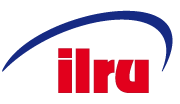Disability, Diversity, and Intersectionality in CILs (11 Hours)
About the Training
CILs are always striving to reach unserved and underserved populations and to better represent the vibrant, racial, ethnic, linguistic, and multi-cultural communities that we serve. If you would like effective, practical information on how to accomplish this at your CIL, then this training is designed for you.
As Centers for Independent Living, we all believe in “Nothing About Us, Without Us!” We should abide by the same rules when it comes to including, serving, and being led by all of the diverse people with disabilities in our communities. We must engage in thoughtful conversations, strategic partnerships, proactive outreach, and organizational shifts to ensure that our organizations are reaching, serving, and welcoming to people with disabilities of all backgrounds in our communities. This is not only relevant to our consumers, but to ensure that our staff, decision-making staff, board members, volunteers, and community leaders represent those same backgrounds and life experiences.
In this on-demand training, you will learn from the Executive Directors of seven CILs and other IL leaders how they’ve created organizations that welcome and represent the broad communities that they serve.
Target Audience
Center for Independent Living staff, especially administrators, program managers, and advocates; it may also be of benefit to CIL board members, and staff and members of Statewide Independent Living Councils.
Learning Objectives
You will learn:
- The definition of intersectionality, and relationship to people with disabilities, IL/Disability Rights Movements, and CILs.
- How the concept of intersectionality addresses all identities of individuals with disabilities—including diverse disabilities, race, ethnicity, language, cultural norms, sexual orientation, gender expression, age, and socioeconomic status.
- What CILs can do to convey a welcoming atmosphere to all people, across a diverse range of identities and groups.
- Ways to engage and connect to diverse consumers in rural/remote areas.
- The importance of organizational policies, procedures, and practices to create a necessary framework in achieving DDI.
- Strategies for recruiting, hiring, and supporting diverse staff that represent your community.
- Steps to recruit diverse board members and engage them in supporting DDI.
- The definition of micro-aggressions and aversive “isms,” and how to handle microagressive behavior.
- How to identify potential partners and collaborators who represent racial, ethnic, cultural, civil rights, and social justice communities.
- Strategies for effective coalition-building that enhance capacity of all partners.
Video/Training Materials/Resources
Below are the links to the recorded sessions, the PowerPoint presentations, text transcripts of the presentations, and a link to additional resources on disability, diversity and underserved populations. To view individual presentations, follow the links below. To view a catalog of presentations, visit:
Module 01: Introduction to Intersectionality
Module 02: Intersectionality Discussion and Q&A
- View the Video of Module 02 (00:45:48)
- View the Powerpoint Presentation (continues from Module 01)
- View the transcript
Module 03: DDI Project Overview & Background
Module 04: An American Journey for CILs, Overview
Module 05: An American Journey for CILs, CIL Stories — The experience of four CILs in taking this journey
Module 06: Wrap-up of the Day
- View the Video of Module 06 (00:25:49)
- View the transcript
Module 07: Review of Day One
- View the Video of Module 07 (00:07:51)
- View the transcript
Module 08: Why Words Matter/Addressing Micro-aggressions to Create a Welcoming Environment
Module 09: Creating a Welcoming and Supportive CIL for Diverse Populations
Module 10: Creating a Welcoming and Supportive CIL for Diverse Populations — Small Group Activity
- View the Video of Module 10 (00:25:57)
- View the Powerpoint Presentation (continues from Module 09)
- View the transcript
Module 11: Creating Supportive Organizational Culture and Infrastructure
Module 12: Creating Supportive Organizational Culture and Infrastructure, Continued
- View the Video of Module 12 (00:50:37)
- View the Powerpoint Presentation (continues from Module 11)
- View the transcript
Module 13: Data Mining and Community Mapping to Address Diversity
Module 14: Review of Day Two
- View the Video of Module 14 (00:10:44)
- View the transcript
Module 15: Making New Friends and Playing Well with Others
Module 16: Summary of Previous Evening's Discussion on Outreach to New Americans
- View the Video of Module 16 (00:20:29)
- View the transcript

